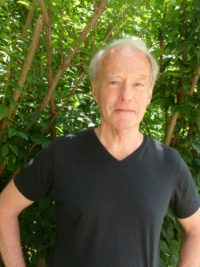And so I hold myself back and swallow the cry
of a darkened sobbing.
But he held his tears and walked on, resolved to solve the enigma before the day was up.
When they arrived at the museum, Curtin was again struck by the thought that museums were very strange places. He always felt as though he were entering a graveyard, where art was isolated from the living. This funereal quality was amplified by the required silence, as if one were in the presence of ghosts or gods who required adoration. Museums seemed to him to be temples of the rich where the art was their war booty on display, the victims of their conquests antiseptically absent. He felt half-dead when in them.
This particular exhibit came to be because the European colonial powers had looted their colonies for art and artifacts that they brought back to their home countries and locked up in museums and in the homes of the rich. Spoils of war. It happened that in 1907 Pablo Picasso visited a dusty museum in Paris, the Muse d'Ethnographie du Trocade'ro, where he was startled by the African art and artifacts he saw there. He later said:
The greatest artistic emotion I have felt was when I was suddenly struck by the sublime beauty of the sculptures carved by anonymous artists in Africa. Passionately religious, yet rigorously logical, these works are the most powerful and most beautiful things ever produced by the human imagination.
Then he proceeded to appropriate the appropriated art, and some of the results lined the walls of the Montreal Museum of Fine Arts. Curtin couldn't help noticing Picasso's doubling down on rigorous logic in his opportunistic "borrowing." But the "passionately religious" nature of the artist's work that graced the gallery escaped him, unless the museum had become the new cathedral. This seemed quite probable. He doubted that Picasso shared Adams' lofty assessment of Chartres Cathedral, since Picasso considered African sculpture "the most beautiful things produced by the human imagination," and his attitude toward the "religious" was colored by its foreign and exotic qualities, elements absent from the European Christian or Islamic heritage of his homeland of Spain, or from France and Europe as a whole.
Picasso did most of this African-inspired work between 1906 and 1909, before turning to what has been called his Cubist period, which only lasted until the "War to End All Wars" ended the lives of over 20 million people, while wounding even more. Like Picasso's African and Cubist work, the war surely offered a different perspective. It was all so logical and technological, the height of modern efficiency, yet seemed conjured up from the darkest pit of hell. It gave one a different understanding of time and space, and relativized plenty of bromides. Curtin remembered reading with sardonic amusement the words of Freud, who was so disappointed by the great white man's betrayal of his highest "ideals" by waging the First World War:
We had expected the great world-dominating nations of white race upon whom the leadership of the human species has fallen, who were known to have world-wide interests as their concern, to whose creative powers were due not only our technical advances towards the control of nature but the artistic and scientific standards of civilization - we had expected these people to succeed in discovering another way of settling misunderstandings and conflicts of interest.
Next Page 1 | 2 | 3 | 4 | 5 | 6 | 7
(Note: You can view every article as one long page if you sign up as an Advocate Member, or higher).





